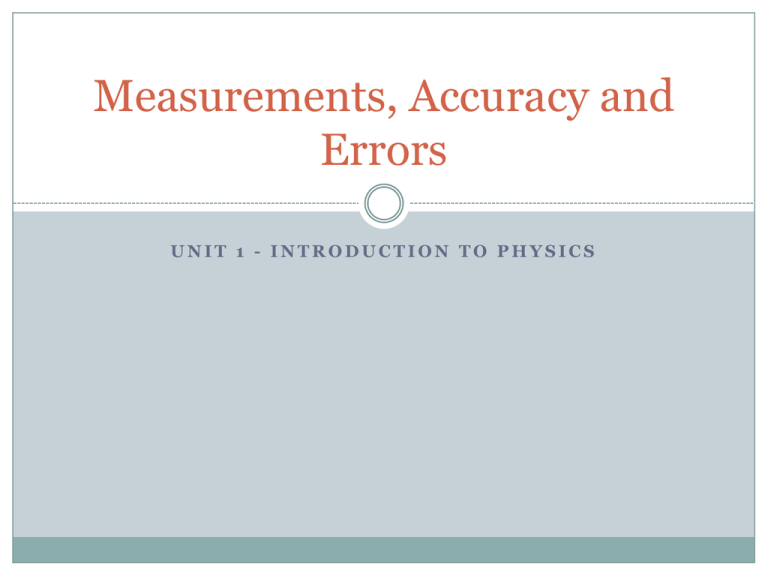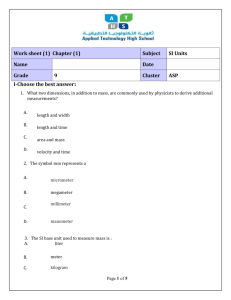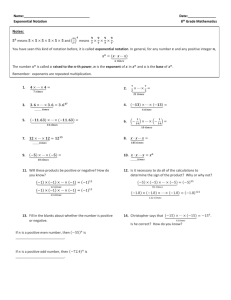Measurements
advertisement

Measurements, Accuracy and Errors UNIT 1 - INTRODUCTION TO PHYSICS Vocabulary Measurement magnitude quantitative Qualitative precision accuracy Parallax significant figures scientific notation Length volume area Constants electromagnetic spectrum Meniscus beaker graduated cylinder Thermometer triple beam balance meter stick Measurements, Accuracy and Errors Physics is a quantitative science. Physicists deal in numbers. Physicist's numbers are often measurements, not the pure numbers of the mathematician. Therefore, physicists measure things. Measurements, Accuracy and Errors As a physicist, you have to deal with four different types of numbers: Pure "theoretical" numbers – numbers in formulas. Counts - a measurement that does not need a measuring instrument. It is always a whole number. Measurements - mass, length, volume, etc. Calculated values – values calculated from formulas. Measurements, Accuracy and Errors Precision versus Accuracy Precision is the state or quality of being exact. It is the ability of a measurement to be consistently reproduced. Precision is only as good as the tools used to measure. To be precise, record exactly what you measured. Measurements, Accuracy and Errors Accuracy refers to how close or far a determined experimental value may be from the actual value. Accuracy refers to the correctness of a single measurement. Accuracy is determined by comparing the measurement against the true or accepted value. Measurements, Accuracy and Errors Measurement, Accuracy and Errors All experimental measurements are subject to some errors, other than those caused by carelessness. Common errors which occur are parallax errors, zero errors and reading errors. Parallax errors are errors which occur when the eye is not placed directly opposite a scale when a reading is taken. Insert parallax error diagram Measurements, Accuracy and Errors Zero errors occur when a measuring instrument does not indicate zero when it should. Instruments should be adjusted to read “zero” before measuring is done. Reading errors occur when the reading lies between the scale divisions and one has to guess the value. Insert Reading error diagram Measurements, Accuracy and Errors Significant Figures and Rounding The number of significant figures in a value is the number of figures in that value ignoring leading or trailing zeros and disregarding the position of the decimal point. Significant Figures give an indication of the accuracy of a reading. Insert Significant Figures diagram Measurements, Accuracy and Errors Rounding is the process of reducing the number of figures quoted. The last significant figure is dropped and the new last figure changed depending on the one dropped. Refer to significant figures diagram Measurements, Accuracy and Errors Exponential Notation and Scientific Notation For large numbers like 283,000 it is impossible to say how many of the figures are significant because the zeros have to be included to show the magnitude. In this case we can use exponential notation and scientific notation to represent the value in the correct amount of significant figures. 2.82 x 105 Measurements, Accuracy and Errors Very large or very small numbers take a long time to write out and are difficult to read. Writing measurements using scientific notation helps keep our values accurate, readable and small. Insert Order of Magnitude







